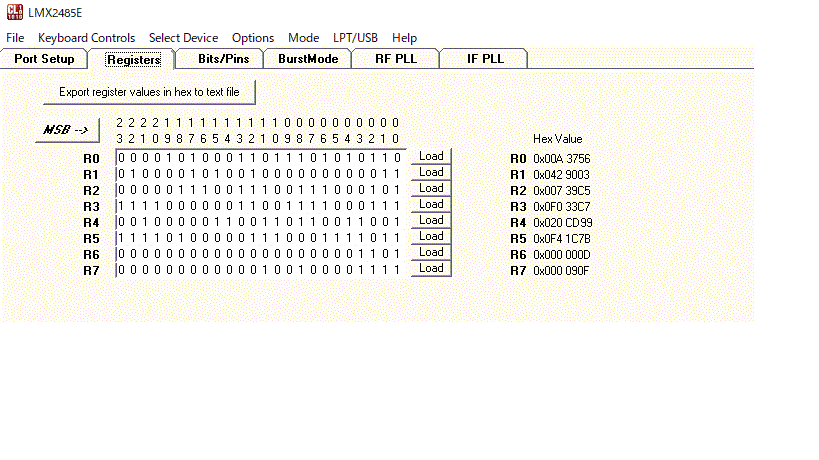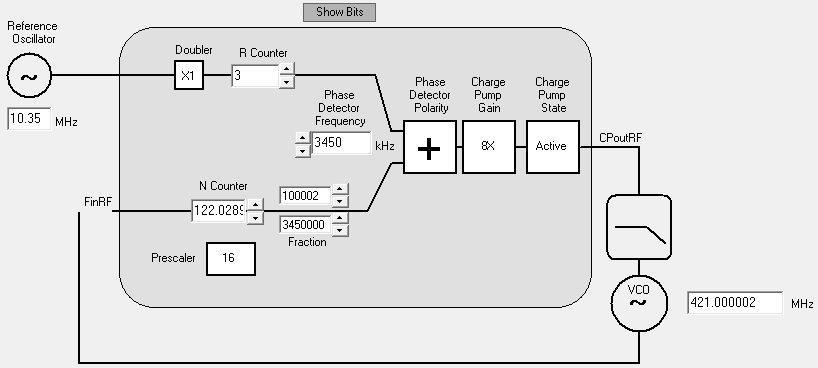Hello
My customer chosen LMX2485E for 2021 model.
Would you please how to choose RF_A to RF_C? ( any app note?) I have 2 question in the following.
1) condition
・PLL Ref OSC =10.35MHz
・3rd(FM[1:0]=3)
・CSR[1:0]=0 (disabled)
・RF_P[1]=1 (Prescaler=16)
2) Goal
1st local = 405.05~707.725 MHz
set frequency within +/- 1Hz ( ex. 421.590000x)
3) Question
<Q1>
Customer ( and I ) don't know how to set the value of RF_A, RF_B, RF_C .
Would you please let us know how to set RF_A to RF_C? ( Do you have any app note?)
We know a following criteria * in LMX2485E d/s 8.6.1.2 RF_N[10:0]—RF N Counter Value, but we didnot find other
criteria/discription in order to choose RF_A ~ RF_C.
*
N = RF_P ・RF_C + 4 ・RF_B + RF_A
( N - 2FM - 1…N + 2FM ; where RF_C ≧ Max{RF_A, RF_B} )
<Q2>
Customer set N counter value with cut & try using Coadloader RF PLL tab.
So, customer just follow the value in the Register tab to have within +/- 1Hz ( ex 421.59000043),but
don't know whether this is okay or not.
(In fact, they had tested those in their board, and test result was fine (C/N=66dB))
I attached customer's xx.mac file for Coadloader.
Is there anything mistake or anything violation for choosing RF_A ~ RF_C ?
Thank you for your support.
Best Regards
( please change .rar to .mac)




